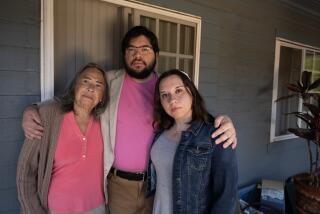Festival Seeks to Build Trust on Minnie St.
- Share via
SANTA ANA — Victoria Zaragoza has seen heaps of changes during her 24 years in the Minnie Street area, the most dramatic of which was in the late 1980s when Cambodian refugees fleeing political persecution steadily moved into the north side of the neighborhood.
Bunna Ly was one of the new arrivals. In 1989, she settled in the neighborhood which, compared to the killing fields of Cambodia, was a sanctuary. From the windows of her apartment, she--as have other Cambodians--viewed with indifference or curiosity the activities of her Latino neighbors, who themselves have kept their distance.
The two women are optimistic that such wariness will soon dissipate with Saturday’s Minnie Street Festival, whose purpose is to bring two immigrant cultures together. The celebration will include Mexican and Cambodian food booths, music, dances and other entertainment. It also features artwork by the children in the area.
The event, to be held in the 800 block, is organized by a coalition of apartment owners, police, city officials, church leaders, social workers and residents, including Zaragoza and Ly.
“Hopefully, the festival will bring about cohesion among the people,” said Kris Kakkar, a festival planning committee member. “Hopefully, there will be dialogue and the residents will begin to work together.”
He added: “This is only one of the steps we’re using to get everyone to be involved in what’s going on in their neighborhood.”
The residential area, bounded by McFadden, Grand, Chestnut and Standard avenues, is inhabited by about 9,000 Latinos and 3,000 Cambodians. For years, the neighborhood, which consists of rows of old apartment buildings and a few single-family homes, was notorious for having the highest crime rate in the city. Gang members and drug peddlers brazenly committed crimes in broad daylight.
Residents helplessly watched.
All that changed last August when police opened a substation and officers made a point to communicate with residents. The crime rate plummeted. Apartment owners and residents worked together to clean up the blighted area.
But one aspect of life in the neighborhood that remained starkly unchanged was that Latino residents still basically lived on their side, on the south, and the Cambodians mostly stayed on theirs.
“The language barrier is very hard” to overcome, said Ly, 40, who has been taking English classes to, among other things, enable her to approach her neighbors. “It’s not easy when you don’t know too much about each other.”
Many of their children do hang out with each other. But concerned residents and others want the adults to make some attempts to reach out.
The Cambodian Family Inc., a social services agency, made the initial effort last year when, with money from a federal grant, it launched a celebration recognizing the Cambodian New Year and Cinco de Mayo. There was enough participation among the two immigrant groups--though again, “not too much mingling,” Zaragoza said--for the planners to decide to do it again this year.
What’s dramatically different in this year’s celebration is that the funds are being raised by the coalition members. “We are all partners of the community and we are a part of the community,” said Sandra Dominguez, an assistant youth coordinator with the Cambodian Family.
Zaragoza added: “You cannot have just one person or group do something like this and call it a community effort. It takes all of us.”
More to Read
Sign up for Essential California
The most important California stories and recommendations in your inbox every morning.
You may occasionally receive promotional content from the Los Angeles Times.










